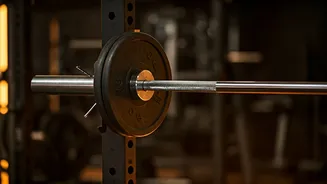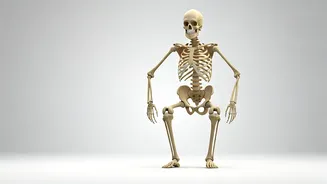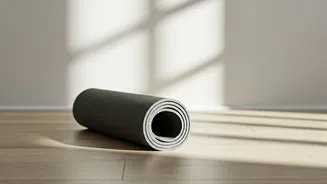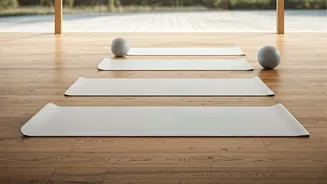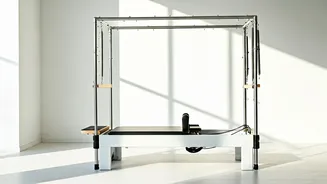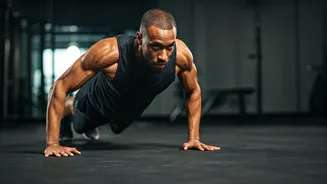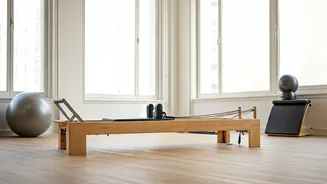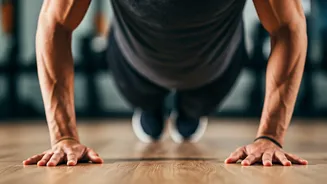Embrace Indoor Fitness
The modern lifestyle often limits physical activity, but there's a practical remedy: embracing indoor fitness. Utilizing your home for exercise can be
surprisingly effective. A nutritionist suggests a dynamic indoor routine to transform your living space into a fitness zone. This approach is excellent for various reasons, including its convenience, affordability, and the potential to fit exercise into even the busiest schedules. By understanding how to move indoors, individuals can turn their homes into places of health and well-being. This guide highlights a straightforward approach to help you kickstart your indoor exercise journey.
Warm-up Essentials
Before diving into any workout, a proper warm-up is crucial. Start with dynamic stretches that mobilize your joints and elevate your heart rate. Arm circles, leg swings, torso twists, and high knees are fantastic choices. Aim for at least five to ten minutes of warm-up exercises to prepare your body. Warming up ensures that muscles are ready for activity, minimizing the risk of injuries. Warming up does more than get the body ready for the workout; it is a vital part of the overall fitness regimen. This foundational step will make the exercise more enjoyable and enhance the benefits.
Jumping Jacks
Jumping jacks are a classic, high-impact exercise that quickly raises your heart rate and engages multiple muscle groups. Stand with your feet together, and jump while spreading your legs apart and raising your arms overhead. Repeat this movement continuously for one minute. The movement involves coordinating your arms and legs. Jumping jacks are simple to perform and highly effective in burning calories. They work various muscle groups, from the legs to the shoulders, making it an excellent exercise for a full-body workout. They are a great way to start your routine, getting the blood flowing and preparing the body for more intense activities.
High Knees in Place
High knees are a dynamic exercise that focuses on leg strength and cardiovascular fitness. Stand with your feet shoulder-width apart, and then alternately bring your knees up towards your chest as quickly as possible. Pump your arms to increase the intensity and efficiency of the exercise. Aim to maintain a consistent pace for one minute. High knees are an excellent option for building endurance and improving coordination. They also target the core, engaging abdominal muscles for added stability. Incorporating this move into your routine is a fast way to get your heart rate up and burn calories.
Butt Kicks
Butt kicks are another effective exercise for enhancing lower body strength and flexibility while simultaneously boosting your heart rate. Stand with your feet hip-width apart and alternately kick your heels towards your glutes. Be sure to engage your core and pump your arms for added momentum. Perform this exercise continuously for about a minute. This targets the hamstrings and glutes, creating a solid lower-body workout. Regular practice can improve the range of motion and support the cardiovascular system. Butt kicks are very useful as they target specific muscle groups while also providing a good cardio workout. They contribute to enhanced lower body muscle strength and overall fitness.
Plank for Core
The plank is a versatile exercise that is vital for strengthening your core muscles. Begin by positioning yourself in a push-up position, but instead of resting on your hands, place your forearms on the floor, ensuring your elbows are directly beneath your shoulders. Maintain a straight line from your head to your heels, engaging your core muscles to stabilize your body. Hold this position for as long as possible while keeping proper form. Building core strength offers great benefits to everyday activities and helps with maintaining balance and posture. Planks are an incredibly efficient way to strengthen your core and enhance overall body stability.
Squats for Strength
Squats are essential for developing lower body strength and improving overall muscle tone. Stand with your feet shoulder-width apart, and then lower your body as if you're sitting in a chair, keeping your back straight and your core engaged. Ensure that your knees don’t extend past your toes. Return to the starting position and repeat for one minute. Squats are very efficient because they engage several key muscle groups like quads, hamstrings, and glutes. Consistent practice enhances your functional strength and improves your balance. Squats are easy to learn and can be adapted to different fitness levels.
Lunges for Legs
Lunges effectively work your legs and glutes, improving your balance and coordination. Stand upright, then take a step forward with one leg, lowering your body until your front knee is bent at a 90-degree angle and your back knee nearly touches the floor. Push back up to the starting position and alternate legs, continuing for one minute. Lunges can be tailored to various fitness levels, from beginner to advanced. Regular performance leads to improved lower body strength and is particularly valuable for improving stability. Lunges offer an excellent way to target leg muscles, enhancing functional fitness through balance and movement training.
Push-ups for Upper Body
Push-ups are a fundamental exercise that targets the chest, shoulders, and triceps, while also engaging the core. Start in a plank position, with your hands placed slightly wider than shoulder-width apart. Lower your body until your chest nearly touches the floor, keeping your back straight and core engaged. Push back up to the starting position and repeat as many times as possible within one minute. Push-ups can be adapted to accommodate different fitness levels. They help improve upper-body strength and are incredibly versatile. Push-ups are simple to perform, requiring no equipment and easily adaptable to different fitness levels.
Crunches for Abs
Crunches are a very effective exercise for strengthening your abdominal muscles. Lie on your back with your knees bent and feet flat on the floor, and place your hands behind your head, supporting your neck. Engage your core, and lift your upper body towards your knees, keeping your lower back pressed into the floor. Lower yourself back down with control and repeat for one minute. Crunches help tone your abdominal muscles, enhancing core strength, and promoting better posture. The exercise is a straightforward way to target your abs and is an excellent addition to any core workout routine. Crunches are very easy to incorporate into daily life and require minimal space or equipment.
Cool Down Routine
Cooling down is as crucial as warming up to allow your body to recover properly. After finishing your workout, gently stretch each muscle group for about 30 seconds. Focus on holding each stretch, feeling the tension ease. Stretching reduces muscle soreness, improves flexibility, and helps to bring your heart rate back to normal. This simple practice ensures that your body recovers and prepares for the next session. Stretching should be part of every workout as it enhances both the immediate and long-term benefits of exercise.


